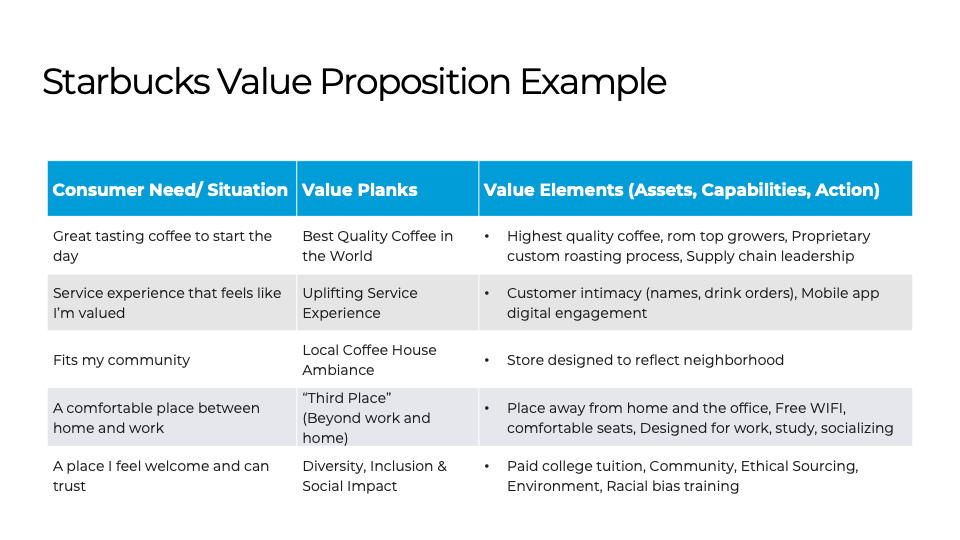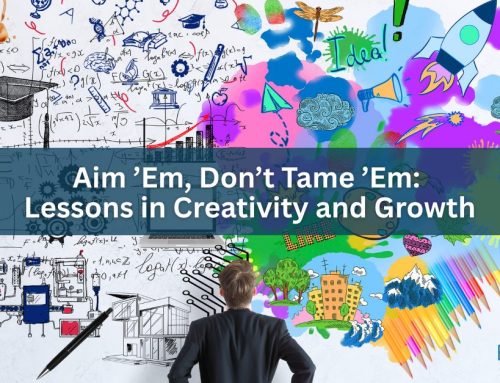Starbucks is a great example of how “commoditized” products can compete on value by stringing together a number of brand benefit planks.
At the most basic level, Starbucks markets three things: product, service, and atmosphere, crafted into a “third place” experience. It then combines these with a social impact plank to round out the offering.
Starbucks elevates the coffee-drinking experience well beyond a cup of joe for an estimated 60 million visitors per week who don’t seem to mind spending $5.75 or so for a venti, skinny, vanilla latte, or similar drink. Let’s break down Starbucks’ value proposition example, plank by plank.

The first value plank ties to the core product—coffee—and sets a lofty goal: to offer the best-tasting coffee in the world. Starbucks does this by controlling its supply chain—working directly with growers, overseeing its custom roasting process, and controlling retail distribution. Starbucks invests heavily here, given how vital this is to its business proposition.
Customer intimacy and personalization is the second plank. Starbucks seeks to deliver an uplifting experience to every customer, offered both personally and digitally.
Personally, baristas are trained to use customers’ names, remember their drink orders, and have intentional conversations with them for a more intimate experience.
Digitally, through Starbucks’ app and Wi-Fi service—patrons can order, pay ahead, and manage their rewards program.
It’s not easy to provide a personal experience across roughly 30,000 stores, but Starbucks makes it a core value plank to direct both its people and company operations.
The third value plank centers on in-store ambiance, designed to reflect the local culture and characteristics of each neighborhood. Starbucks avoids cookie-cutter store designs, knowing this adds to customer intimacy, builds loyalty, and solidifies the bond with its consumers.
The fourth plank recognizes that for many people, Starbucks is a comfortable “third place” (outside of home and work) to socialize and get stuff done.
Describing the strategy, Howard Schultz said, “Providing the world with a warm and welcoming third place may just be our most important role and responsibility, today and always.”
Ever the marketer, Schultz describes “third place” in terms of consumer benefits, but it’s also a good business strategy. Offering a third place with free Internet, comfortable seating, and relevant menu options throughout the day also increases revenue at off-peak times.
The final plank speaks to Starbucks’ diversity, inclusiveness, and social impact. These are employee-related values woven into every other aspect of the business. Howard Schultz said, “We built the Starbucks brand first with our people, not with consumers. Because we believed the best way to meet and exceed the expectations of our customers was to hire and train great people, we invested in employees.”




















Follow EquiBrand